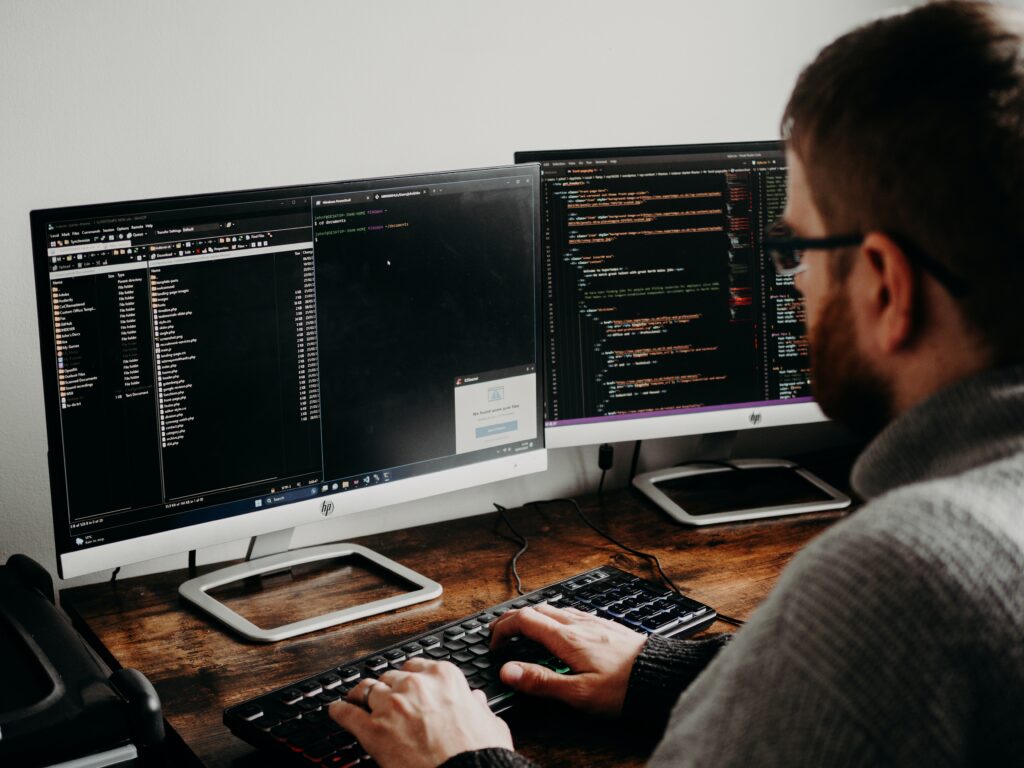Pair programming is a highly collaborative approach to software development in which two programmers work together at a single workstation. They share a single keyboard and monitor, with one person assuming the role of “driver” who writes the code, while the other acts as “navigator,” providing feedback, suggesting improvements and detecting potential errors. This tandem coding technique fosters constant communication, knowledge sharing and real-time problem solving, resulting in higher quality code and better team dynamics.
Why do people use pair programming?
Pair programming has several advantages that make it a popular practice among development teams. First, it improves code quality by promoting continuous code review and bug detection, leading to fewer bugs and improved software reliability. Additionally, pair programming helps encourage knowledge sharing and skill development as team members learn from each other. Moreover, the collaborative nature of pair programming fosters teamwork and boosts morale as programmers feel supported and involved in the development process.
How does pair programming work?
In pair programming, two programmers collaborate to write code in real time, with one taking the role of “driver” and the other “navigator.” The driver actively writes code, translating ideas into concrete implementations, while the navigator provides feedback, suggests improvements and keeps an eye on the bigger picture. This dynamic exchange of roles ensures that code is thoroughly reviewed as it is written, leading to higher quality solutions and reduced debugging time. Pair programming sessions typically involve frequent communication, with developers discussing design decisions, problem-solving strategies and potential challenges throughout the process.
Benefits of pair programming
- Improved code quality: Pair programming promotes continuous code checking and error detection, resulting in higher quality code with fewer errors.
- Knowledge sharing: Programmers learn from each other’s knowledge and approaches, fostering skill development and enhancing teamwork.
- Team morale and engagement: Collaborative coding sessions boost morale and engagement because developers feel supported and valued in the development process.
- Faster problem solving: Two heads are better than one – pair programming speeds up problem solving by leveraging the collective intelligence and creativity of the team.
Challenges of pair programming
- Communication overhead: Pair programming requires constant communication, which can sometimes lead to distractions or misunderstandings if not managed effectively.
- Personality dynamics: Pairing people with conflicting work styles or communication preferences can limit productivity and cause tension during coding sessions.
- Resource intensive: Pair programming requires dedicating two developers to a single task, which can be resource-intensive and may not always be feasible in tight development cycles.
- Skill imbalance: Pairing people with very different skill levels can lead to frustration or imbalance in cooperation, affecting its effectiveness.
Best practices for pair programming
Successful implementation of pair programming requires following certain best practices to maximize its benefits and mitigate potential challenges:
- Establish clear goals: Before starting a pair programming session, define clear goals and deliverables for the task at hand. This ensures that both programmers understand what needs to be achieved and can adjust their efforts accordingly.
- Regular role rotation: regularly rotate between the “driver” and “navigator” roles during sessions to ensure balanced participation and prevent fatigue. This allows both developers to actively participate in the coding process and promotes knowledge sharing.
- Communicate effectively: Encourage open and constructive communication between the pairs, emphasizing the importance of active listening and respectful feedback. Clear and concise communication helps prevent misunderstandings and facilitates smoother cooperation.
- Take breaks: Incorporate regular breaks into pair programming sessions to prevent burnout and maintain focus. Short breaks allow developers to recharge, reflect on their progress, and return to the task with renewed energy and clarity.
- Use tools and resources: Take advantage of collaboration tools and resources designed for pair programming, such as screen-sharing software, collaborative coding platforms and integrated development environments (IDEs). These tools improve communication, facilitate real-time code sharing and increase productivity.
- Practice empathy and patience: Cultivate a supportive and inclusive environment in which both developers feel comfortable expressing their ideas and perspectives. Practice empathy and patience, recognizing the other’s strengths and limitations and offering assistance when needed.
- Review and reflect: After the pair programming session, take time to review and reflect on the experience. Discuss what went well, areas for improvement and lessons learned. This reflective practice helps identify patterns, refine strategies and improve future pair programming sessions.
By following these best practices, teams can harness the full potential of pair programming to improve code quality, foster collaboration, and drive innovation in software development projects.
